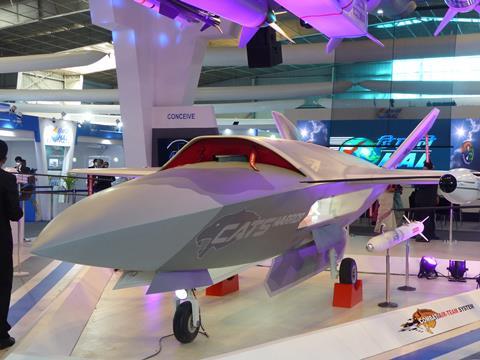India’s air force sees the potential of manned-unmanned teaming (MUM-T), but a senior officer says that the realisation of collaborative combat aircraft (CCA) is decades away.
Indian air force Air Marshal Radhakrishnan Radhish says that MUM-T capabilities will be a key requirement for India’s combat aircraft, and that upgrade work for the Sukhoi Su-30MKI and Hindustan Aeronautics (HAL) Tejas Light Combat Aircraft will include the addition of such capabilities.

“We have to go this way,” says Radhish, addressing the Dubai International Air Chiefs’ Conference, which is taking place ahead of this week’s Dubai air show.
But he says it will be “10-20 years” before CCAs will operate autonomously along manned assets.
He says that Indian industry – specifically HAL – is taking the lead with CCA research, whereas the air force is observing developments.
HAL is working on a range of CCAs under its CATS – Combat Air Teaming System – initiative. Specific CCAs include the CATS Warrior, CATS Hunter, and CATS Alfa.
Within the air force, Radhish says that the younger generation of officers is more open to the idea of CCAs, while older officers are somewhat more lukewarm.
Longer term, he feels that CCAs will offer the capability to strike higher-end threats in situations where it is too dangerous to deploy a human.
Artificial intelligence (AI) will be a key enabler for these platforms, but this also means that the air force will require highly skilled personnel.
“AI adds the missing link between the human and machine, with technology placing a premium on the quality of the human behind the machine,” he says.


























